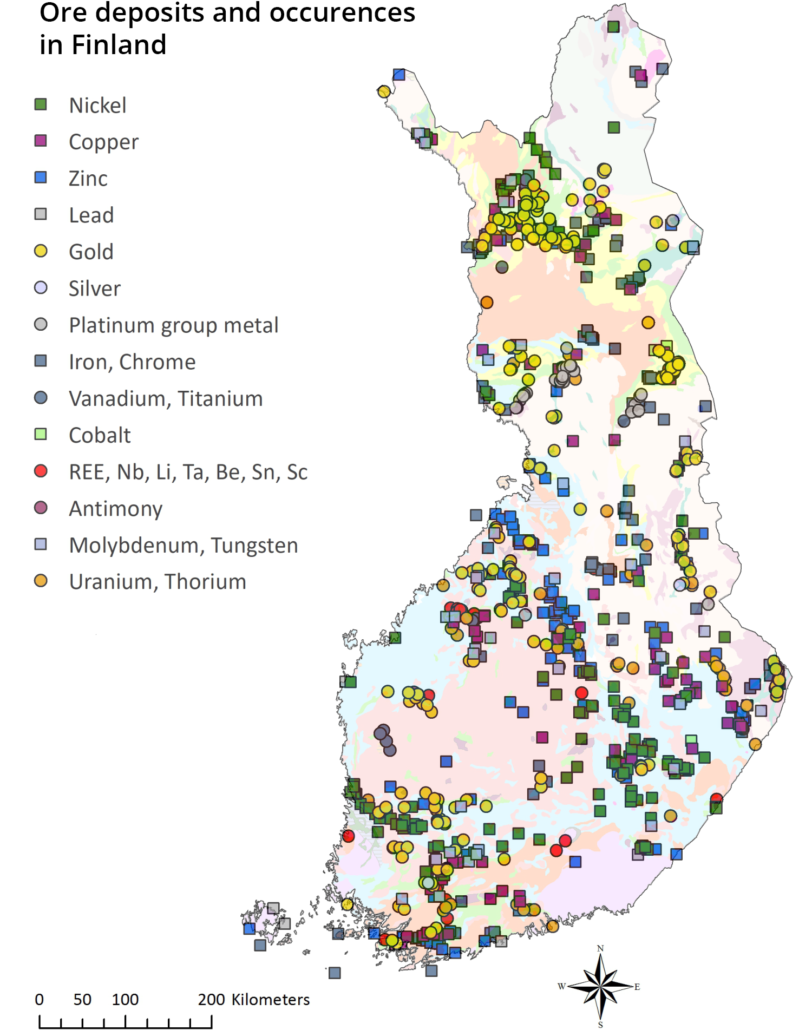Mineral Systems in Finland
This website contains systematically organized and maintained data for various types of mineral systems and aims to support identification of new mineral exploration targets in Finland.
Formation of different types of ore deposits can be connected to transient episodes during the history of large-scale Earth systems. Holistic analysis of earth systems helps to recognize those combinations and hierarchies of geological processes which triggered formation and supported preservation of mineral belts, districts and deposits. In the point of view of mineral exploration, those processes which left mappable footprints in the Earth`s crust have primary importance because they directly reveal the preferable settings of mineral belts and districts on regional-scale or vectors-to-ore on deposit-scale.
The sources of energy driving geological processes, as well as the temporal-spatial variation in style of tectonism, magmatism, sedimentation and metamorphism are determined by the time-dependent geodynamic setting and the corresponding evolution of crustal units which can be read out from the present day architecture of the crust.
The temporarily and spatially restricted periods of formation of different types of ore deposits are confined by the coincidences of several geological processes operating on different time-scales and from local to regional scales. Therefore the absolute timing of ore formation during the evolution of the crust is one of the most important critical parameters in the evaluation of mineral potential.
The geodynamic evolution also defines the formation and opening up of source regions of metals and their transportation agents, as well as the development of conduits for transportation and structures for concentration of metals. The properties of the corresponding local footprints and traps depend on the chemical and physical interaction between the metal transporting media and local lithology and structure. Ore deposit models support recognition of vectors for targeting at this scale. The post-depositional processes also have to be understood in the point of view of preservation of ore deposits and formation of secondary footprints.
Mineral system models summarizing the knowledge available from mineral belts and mappable parameters of those geological processes which are critical for formation of deposits can be used as conceptual or data-based layers in mineral prospectivity mapping or mineral potential evaluation.
The scale- and time-dependent hierarchy of geological processes and their mappable parameters are organized into modules corresponding the most important types of mineral systems in Finland. Modules contain short descriptions with maps/figures and with links to GTK`s databases/maps and services according to the major types of economically most significant ore deposits in Finland.
(Last update: 20.05.2020)

